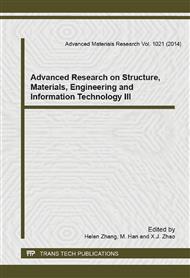p.7
p.11
p.15
p.20
p.25
p.29
p.33
p.37
p.42
Effect of Adding Rare Earths into Iron-Carbon Micro Electrolysis Process on Degradation of Dyeing Wastewater
Abstract:
Nowadays the traditional dyeing wastewater treatments based on flocculation-biochemical technology become more difficult than before. The study in this paper aim was it to probe how adding rare earths (REs) into iron-carbon micro-electrolysis process to advance dyeing wastewater degradation. Firstly, the principle was discussed. Then the experimental methods were stated and it followed by exploring effect of iron powder size on the dye decolorization rate. Next were design of the micro electrolysis orthogonal experiments and discussion of influences of related factors on waste water treatment. The experimental results show that besides common iron powder particle size and the processing time, the factors that have great influence on dyeing wastewater treatment are Ce4+, pH, La3+ and iron/carbon ratio. The sequence of factors influence on wastewater micro-electrolysis treatment is Ce4+ > pH > La3+ > iron/carbon ratio. When pH is 6, COD removal rate arrives at maximum 89%, however when the pH is in the case of too high or too low, the effect of sewage degradation is not good.
Info:
Periodical:
Pages:
25-28
Citation:
Online since:
August 2014
Authors:
Price:
Сopyright:
© 2014 Trans Tech Publications Ltd. All Rights Reserved
Share:
Citation:


